Southern
Iran
<>

The Chaykhuneh-e Vakil inside the Vakil bazaar is undoubtedly the
artistic highlight of Kerman, one of the largest cities in southern
Iran. And the tea ain't bad either. Iranian tea is
concentrated and bitter requiring sugar, similar to Turkish tea and in
contrast with the Chinese style served in Central Asia and the Indian
style sweetened milk tea that is served on the Arabian peninsula.
blablabla
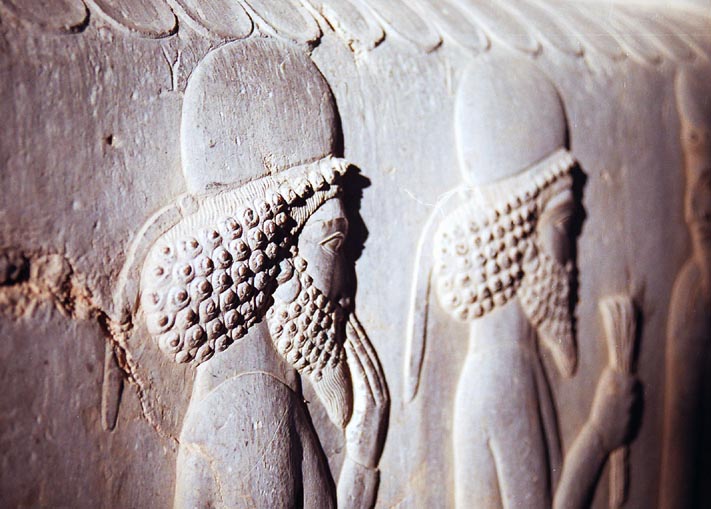
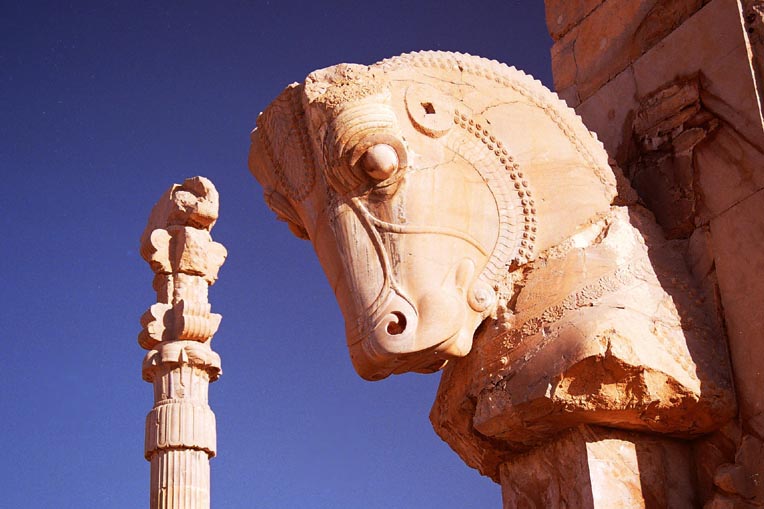

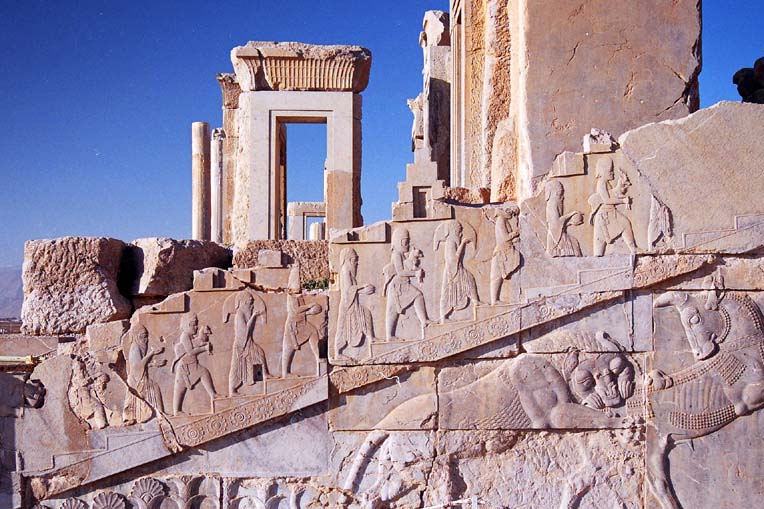
Persepolis is considered one of the great
ancient ruins of the world, and there's no doubt that the reputation of
this Zoroastrian-age royal complex stems primarily from the
extraordinary bas-reliefs carved on walls and staircases. Fine
bas-reliefs are arguably the major contribution to pre-islamic artistic
heritage in Iran. That horsehead is often depicted in promotional
photos of Persepolis, but it's the exception to the rule. This
was also the first time I'd ever seen cuneiform-descended script in
situ. Cool!
blabla
blabla.

The Arg (castle) in Rayen, a lofty hill
town at over 2000m elevation south of Kerman, is being groomed as the
touristic substitute for the destroyed Arg in Bam, a much larger
site. Intensive restoration work has been completed at the Arg-e
Rayen, and it gives an idea of what the Arg-e Bam might have looked
like before the December 2003 earthquake. The appealing
snowcapped 4000m+ Mt. Hezar lends a dramatic and beautiful backdrop
here that doesn't exist in Bam.
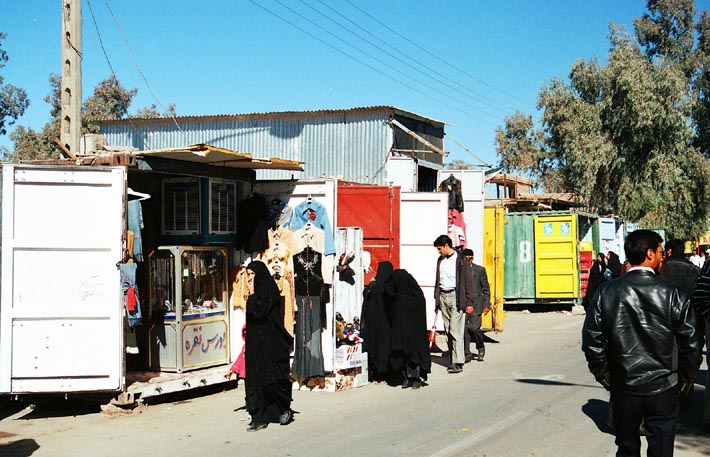
This is the current Bam Bazaar. The
original bazaar remains a dug out dirt ditch occupying a city square, a
full two years after the earthquake. At least they cleared out
the rubble in that square, which is not the case for most of the modern
city of Bam. The vast majority of commerce takes place inside
shipping containers like these shown, wired for electricity and in some
cases with even air conditioners installed in a cut out
rectangle. Appallingly little has been done to reconstruct Bam
properly, and the earthquake looked it happened 2 months ago rather
than 2 years. Without even invoking international relief funds,
the central government monopolizing wealth of the 2nd largest oil
reserves in the world (but only one quarter of which is poured into the
national budget, the other three-quarters mysteriously disappearing)
should be held accountable for the shamefully lethargic progress of
repairs. There is little will shown on the street as well, unlike
the phoenix of Ko Phi Phi in Thailand, where a vigorous reopening and
visible efforts in reconstruction by private citizens only one year
after its destruction by tsunami should be used as a model. Or
the renaissance and complete rebuilding and revitalisation of Gujarat 5
years after their killer temblor. It doesn't look promising in
Bam, where I don't understand why they're even attempting to invest
funds and labour at the moment into restoring the totally annihilated
Arg.
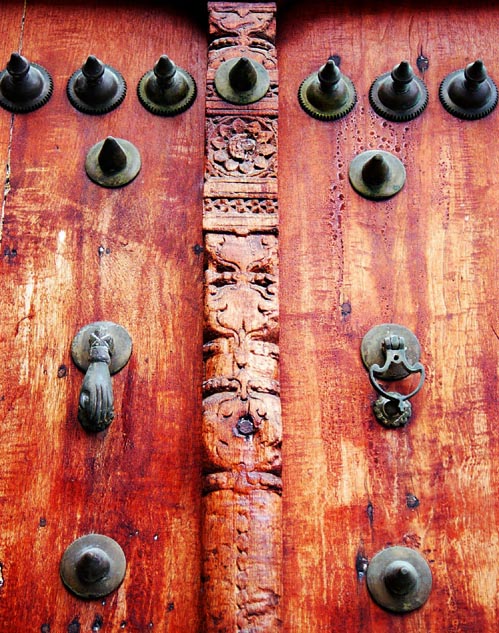
A lovely Bandari door in the old town of
Bushehr on the northern Persian Gulf coast of Iran. The bandari
culture of this coastal region is quite distinct from the persian
interior, and represents a mix of Persian and arab and african
influences stemming from historical trading migrations. The brass
door knockers in the form of a human hand is a pecularity of
Bushehr. Though much of it is in decay, the old city in Bushehr
still contains many examples of lovely designs that should be
conserved, and walking the narrow alleys meandering through the
residents' daily life is a very enjoyable experience.
blabla
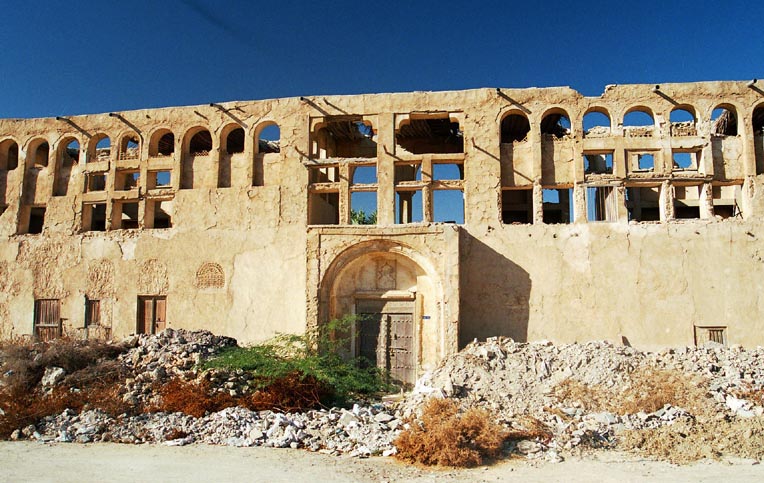
Another
Bandari city on the southern Persian Gulf coast is Bandar Langeh, whose
port is active but historically trumped in its importance by the
British port of Bushehr up the coast and the modern shipping hub of
Bandar-e Abbas not far away. Without the bustle of commerce or
the legacy of empire, the sleepy atmosphere and people of Langeh is a
relaxing antidote to stress and travel fatigue. There isn't much to do
here except wander through the ruined buildings of the old bandari town
(even the seashore is offlimits to foreigners and totally developed by
port and shipping and military interests) but it is a tranquil, sunny,
and pleasant sort of nothing-to-do.
<>

<>
If you've ever wondered what fully
chadorified muslim women do at the beach, here you go. Though
considered a "hole" by many foreign travellers, Bandar-e Abbas is not
only a transport and commercial hub of the region, but a vacation
destination for Iranians (and some international persian gulf tourists)
seeking winter warmth, seaside beaches and shopping. A poor man's
Dubai if you will. I enjoyed my time here and flew out of Iran from
Bandar.
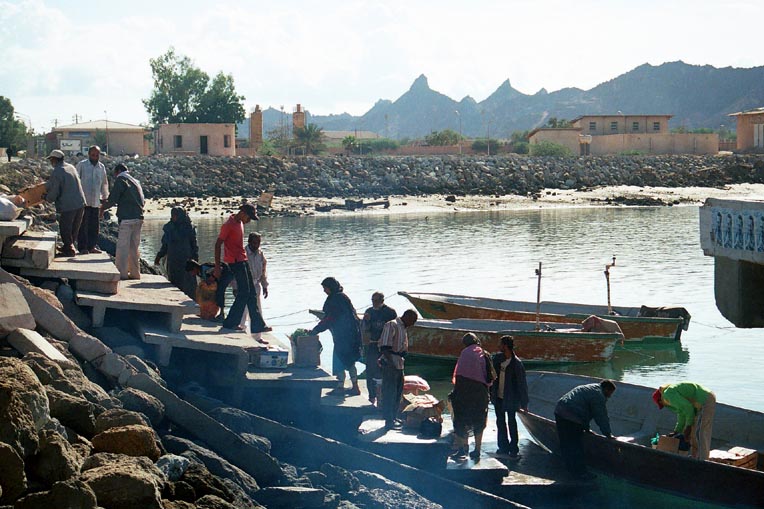
Hormoz
island is the most pleasant quick getaway from Bandar. Formerly
the site of the most important colonial garrison in the region, the
Portuguese eventually were driven out by Iranian forces with British
help, and ever since has calmed down into a quiet fishing island, where
endless lunch breaks and a cheerful island mentality overcomes locals
and foreigners alike. The ruins of the russet coloured Portuguese
fortress on the northernmost promontory of the island still tower over
the only village, like the jagged peaks of the mountains which cover
most of the island. Small shared boats such as these coming into
port are the only means of public transportation to the mainland, where
locals must go to buy food and supplies.
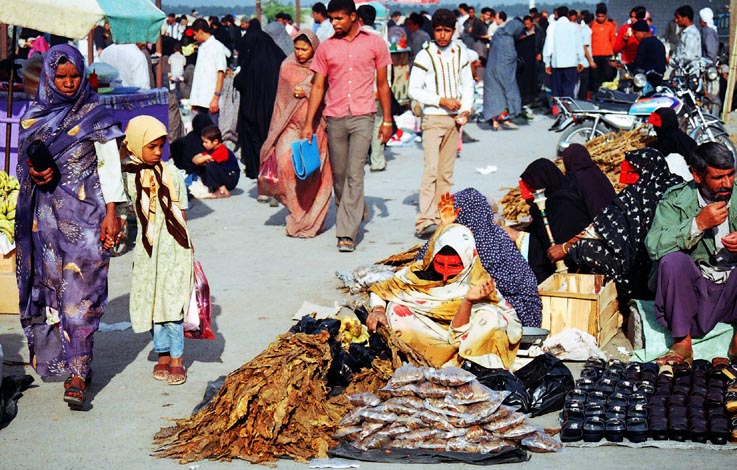
All foreign tourists
come to the colourful Thursday market (panjshanbe bazaar) in Minab,
east along the gulf coast from Bandar, to see the famous "masked" women
unique to this region. The often colourful burqas are believed to
have arisen historically as a matter of fashion more than
function. Minab is a smaller, less developed version of Bandari
life that is more traditional than Bandar-e Abbas but more lively than
Bandar Langeh. Very much worth the short hour's shared taxi ride
from Bandar. Friendly, graceful, and tolerant Bandari people were
a welcome contrast to the more in-your-face, follow-you-all-over-town,
interrogate-you-from-a-list-of-questions brand of friendliness found in
some parts of inland Iran.
BACK
to HOMEPAGE











